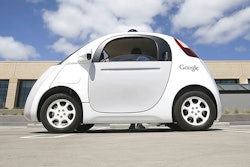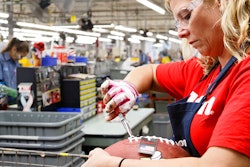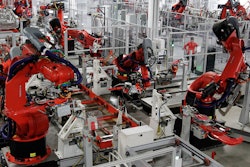It seems that every conversation I’ve had recently with facility owners and managers has veered into the subject of the Industrial Internet of Things – the IIoT. It’s not surprising. It’s hard to read a business or technology story anywhere that doesn’t at least mention the IIoT. It’s truly the “flavor of the week” when it comes to business trends.
All of the buzz around IIoT makes me wish I’d been the one to coin the term. Because in truth, machine-to-machine connectivity and data communications is not new. It has been around for decades. So, I suppose it’s all in the packaging. IIoT is sexier than Modbus-to-Ethernet.
It is good that the industrial sector has rallied around the idea of the IIoT, because it allows us to have much needed conversations about the evolution of intelligent industrial systems. Machine-to-Machine connectivity and computing has evolved. Sensor-enabled devices have local intelligence. Network protocols, APIs and software development platforms are moving towards open architectures. Cloud computing and advanced analytics are processing data at incredible speeds, enabling real-time decision making and precise automation.
There is no question that the IIoT holds enormous potential for improving operational efficiency in factories and warehouses. Facilities that employ the Industrial Internet use sensors, real-time data and analytics to monitor, identify and even anticipate critical situations to respond more quickly. Another key opportunity is to improve productivity, safety and working conditions. Further, the operational data captured from connected systems can provide deep insights into overall effectiveness, which can make the overall operations platform smarter and more automated, and drive both operational and business strategy.
The IIoT has considerable potential payoff. According to a recent Accenture report, “the most conservative independent estimates place spending on the IIoT worldwide at $20 billion in 2012, with spending expected to reach $500 billion by 2020. More optimistic predictions of the value created by the IIoT range as high as $15 trillion of global GDP by 2030.”
Given everything the Industrial Internet promises, significant challenges still thwart wide-scale adoption.
The present IIoT model is young. Business owners haven’t had time to determine the near or long term implications; or to develop appropriate strategies.
On the operations front, the technology evolution of the IIoT is moving faster than manufacturing stakeholders can evaluate solutions and integrate them into their technology plans. New technologies are untested over time. Existing systems are siloed and not interoperable. And there is technology obsolescence; sensors and controls running today’s facilities and equipment are outdated, making it difficult to upgrade with new features and improvements.
All of this significantly increases the complexity and cost to deploy IIoT, creating uncertainty over the ROI. As such, it is wise to resist the temptation to be overly-romanced by the promise of the IIoT. Rather, facility operations teams should take a rational approach to designing, implementing and executing IIoT schemes.
A 2015 report on the IoT by the World Economic Forum argued that, “companies that are new to the Industrial Internet should identify one or two relevant pathfinder applications that can be piloted to create necessary momentum and learning.”
I agree with this argument, and believe that the industrial lighting system should be one of those pathfinder applications.
As the industrial lighting business moves decidedly towards digital LED-based solutions, there is a strong case building for the lighting system to serve as a major component of an IIoT scheme. LED lighting systems address key IIOT concerns on practically every front.
Overhead lighting systems are ubiquitous in a facility layout, and organized spatially in a manner that is optimal for both wired and wireless networking. The controllers that run the systems are networked – either via wired Ethernet or wireless mesh network. The system is powered and always-on. And each fixture can be easily outfitted with smart sensors that capture specific data and feed it to a backend computing platform.
By some standards, Smart LED lighting systems are relatively new, but they have been around for a decade and are certainly not untested. In fact, system testing has advanced to the point where new systems come “ready-to-install” out of the box; pre-tested and certified, so they are verified for consistent performance, visual appearance and system interoperability. IIoT functionality testing and verification will be an important element in these certification programs.
Today, the popular industrial sensor applications are passive -infrared occupancy and photo sensors that create a more efficient work environment by turning lights off when space is unoccupied. Networked controllers are software-driven, enabling remote monitoring, configuration, rezoning, task tuning, systems alerts and energy reporting. The command center for the lighting and sensor operation is in the controller – so adding new intelligent capabilities typically only requires a device upgrade, typically a new sensor or wireless controller.
Incorporating IIoT capabilities into lighting allows facilities managers to pilot applications without new equipment, which requires research, testing, installation and added management. Evolving an LED –based system will not require massive system swap outs – but rather component upgrades. This means you can have high performing LED-based lighting now – with all of the cost control benefits – and have a foundation for future applications.
There are interesting near-term developments that further integrate the LED lighting system into building automation platforms. Today, sensors in sensors in the lighting system will interact with HVAC, access, smoke and fire control and other building management systems. These solutions are being developed with open architectures to streamline customization and interoperability with legacy and new systems.
Another fascinating new IoT platform that will soon be moving into the industrial space is LED-based indoor positioning. This system uses Visual Light Communications (VLC) and other embedded beacon technologies to track people, equipment and inventory as it moves through the facility. Lighting-based indoor positioning also enables GPS-style “blue dot” mapping of a facility to guide workers directly to a location, system, or item, down to the inch, even down to a specific shelf.
The icing on the cake is return on investment. LED lighting is unlike any other IT or OT technology in that it is a future-proofed platform that pays for itself. LEDs are up to 70 percent more energy efficient than traditional lighting. As an integrated lighting system the efficiency from LED can go as high as 90 percent, so there are immediate, significant energy cost reductions. LED systems are long lasting and require minimal maintenance, so both capital and operational costs are contained. And, as I mentioned previously, upgrading feature and functionality is streamlined through component swaps, as opposed to costly system overhauls.
As a lighting manufacturer with skin in the IIoT game, we embrace the vision of a connected, intelligent digital ecosystem for factories and warehouses, where data sharing is seamless between machines and other physical systems. Systems and devices can make real-time operational decisions and execute commands, as well as learn, self-diagnose and heal; and data can be captured, stored, retrieved and analyzed easily to drive process improvements and streamline automation.
This will happen when facilities stakeholders decide to make M2M connectivity a strategic initiative, with a comprehensive enterprise-wide view and a rational approach to implementation. LED lighting provides a high-performing, cost effective on-ramp for IIoT evolution and should be a top consideration in the approach.
Mick Wilcox is the Vice President of Strategic Marketing at Acuity Brands Lighting, one of the world’s leading lighting, controls and daylighting manufacturers. With more than 20 years of experience in the lighting and high tech industries, he is focused on bringing the industrial facility of the future to you today, in a sustainable, energy-efficient manner. A strong advocate for the role that advanced lighting systems play in enabling optimized solutions to improve facilities ROI, maintenance and quality, he works closely with Acuity Brands R&D and product design teams to ensure the company is leading the warehouse space through technological advancements, evidence-based design principles, and voice of the customer insights.
For more information about Acuity Brands industrial solutions, visit www.acuitybrands.com/industrial.






















